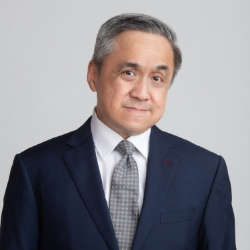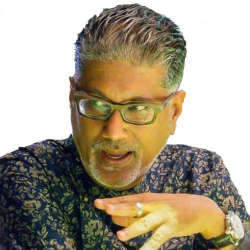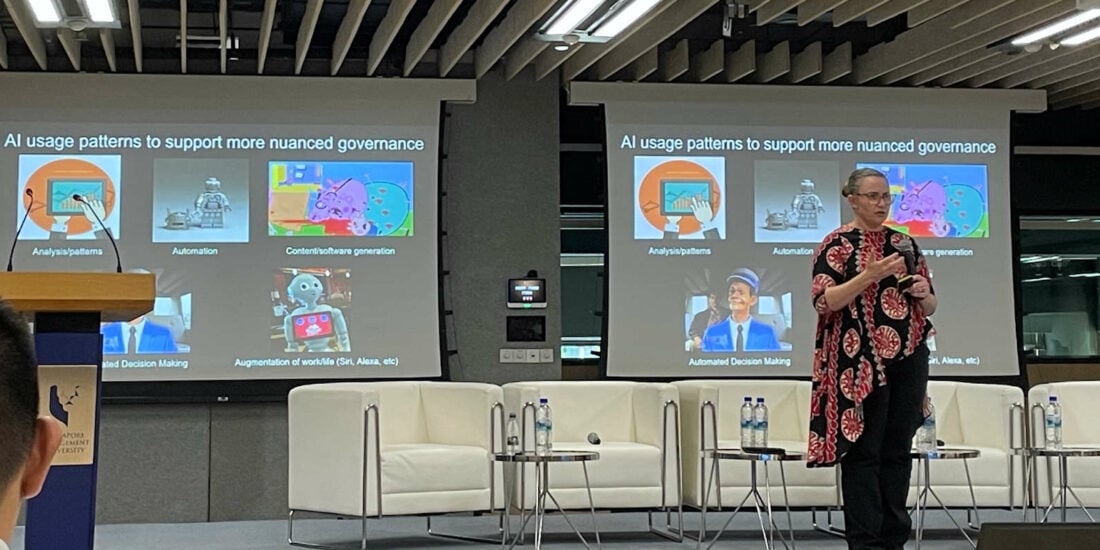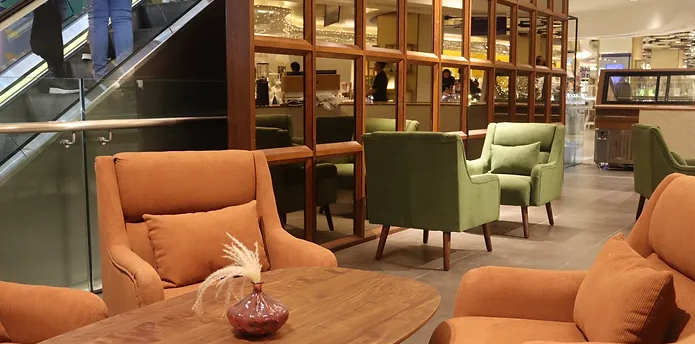
Both Sides Now: In Conversation with Mr Adrian Tan and Mr Anil Changaroth
It is not uncommon for law graduates to spend a few years practising at a firm, and then leaving practice for in-house roles. As law firms cast a wider net for lateral talent, there are in-house legal counsel who have successfully transitioned back to private practice.
In this interview, two senior practitioners who started their careers in private practice, followed by some time in-house before re-joining private practice, show us that one’s career path in law could well be non-linear.
Mr Adrian Tan, a partner at TSMP Law Corporation and the President of the Law Society of Singapore, is a litigator who acts in disputes involving technology, intellectual property, startups, founders, and collective sales. Armed with degrees in Law, and in Computer Science and Psychology, Mr Tan has worked both in-house and in private practice.
Mr Anil Changaroth of ChangAroth Chambers LLC, a Conflict Avoidance and Dispute Resolution practitioner, is an accredited mediator and arbitrator, having qualified as Barrister of Law, and admitted as an Advocate and Solicitor of Singapore, and Solicitor of England and Wales. Having also been trained in Restorative Justice, Emotional Intelligence/Quotient and Investor State Mediator and Arbitrator, his practice with a focus on managing infrastructure, building and construction projects and disputes, includes most aspects of Commercial, Civil, Criminal litigation and Corporate Front End Advisory. In addition to his law degree, Mr Changaroth also holds a Masters of Science in Construction Law and Arbitration (a joint programme by King’s College London and the National University of Singapore).
The only way you can tell if a role fits you is to try it. And if you find a bad fit, move on. That’s the great thing about being a trained and qualified lawyer: you will always have options.
– Adrian Tan
One really needs and should start from the very basics of whatever type of practice one embarks upon and work your way through each and every stage – whether it be litigation or corporate front end advisory work.
– Anil Changaroth
1. What type of firm did you join when you were first called to the Bar, and what was your practice area?
Mr Tan: I was a Legal Assistant (the old name for Associate) with Drew & Napier. It was and is one of the largest firms. I started out as a conveyancing lawyer. I loved real estate (and I still do). I spent a year doing all the grunt work expected of a lowly LA or Legal Assistant: photocopying contracts for big housing projects, checking “good root of title” for good class bungalow buyers, and helping landlords and clients work out their problems together. My university lecturer, Jeffrey Pinsler, found out I was doing conveyancing, and advised me to switch to litigation. I will always be grateful to him for that. I moved to the Intellectual Property department of Drew & Napier, where I handled IP disputes, as well as applications for trade mark, patent and design registration. I eventually moved away from registration work and became a full time litigator.
Mr Changaroth: I first joined a mid-sized litigation firm, initially working on general commercial litigation, including debt collection for telco, telephone listing and hire purchase companies, criminal practice and eventually moving into construction and infrastructure disputes in court and in Arbitration.
2. How many years in practice had you completed before you decided to move in-house, and what was your motivation in going in-house?
Mr Tan: Eight years of practice. At that point, we had just finished a trial with a technology client, CrimsonLogic. The CEO, V Mathivanan, said that he was looking for a general counsel. I liked him (I still do) and I liked his company (I still do), so I agreed to do it. Drew & Napier was lovely about it. It’s one of the Big 4 in Singapore, but the partnership has a friendly, family atmosphere to it. Everyone was very nice and encouraging. I had grown up as a lawyer in Drew & Napier. The partners looked out for me. I had no reason to leave. But I wanted to try working in a Singaporean technology company that was spreading its wings around the world. It was exciting and different. The way the Drew & Napier partners treated me taught me a valuable lesson. I learnt that, if someone leaves a firm, it’s important to show support. It makes the departure pleasant.
Mr Changaroth: Eleven years. Shortly after completing the Masters of Science in Construction Law and Arbitration, the opportunity came up for me to lead as director of the contract advisory and dispute management department of the then largest quantity surveying firm, Davis Langdon and Seah.
3. Was the in-house position what you expected?
Mr Tan: I spent two years in-house. My in-house hours were good, my colleagues were friendly, my boss was a good mentor, the financial rewards were comparable, and I realised that none of those things mattered. I realised that I made an awful mistake. I did not belong there. I understood that I would not have been a good fit anywhere, except in a court room, arguing with people. From the outset, I had been given a traditional road map for working life. It set out important factors such as work-life balance, a good organisational culture, and a steady income. But this may not be for everyone. It wasn’t for me, and it wasn’t for litigators. We liked the intellectual combat, the procedural tactics, the clash in open court. That was what gave meaning to our work.
Mr Changaroth: Yes it was what I expected and quite exhilarating. Some of the challenges included “educating” and sometimes “re-educating” industry professionals about appreciating that the law is a fair share of common sense and logic, and often simply enquiring into why and how. There were also pleasant surprises, such as being able to assimilate into the organisation and to some extent, shifting from the business of consulting to counselling the business. However, I realised that I was still very much a conflict avoidance and dispute resolution practitioner at heart.
4. Do you believe in an “ideal” number of years in practice before making the switch?
Mr Tan: From my personal perspective, this is what I learnt about myself. I needed to have good grounding in private practice before moving in-house. It took me many years. I learnt about real estate (that came in handy as a General Counsel), intellectual property (again, handy in a technology firm) and litigation (very useful in resolving disputes). Some people can learn these areas quickly, but it took me the better part of a decade. Even then, I felt ill-equipped.
Mr Changaroth: Not definitely, but probably 10 years, to allow for sufficient time to learn and develop in private practice, such that one has necessary understanding and maturity to be able to seamlessly apply legal principles to business operations and practice.
5. How has the experience in-house shaped your career?
Mr Tan: For the two years I was at CrimsonLogic, I learned about system development, coding, networking and all the hard tech stuff that has to be resolved in order to build a nationwide system like eLitigation. I also learnt about business development: I went to Mauritius, Saudi Arabia and Canada, among other places, to pitch Singaporean technology in other countries. I grew to appreciate the tough position that general counsel are placed in: the business has to grow, the company has to make revenue, but the general counsel has to be the person to say, “Wait, not so fast!”
Mr Changaroth: The experience gave me a greater and clearer understanding of what clients (both organisations and individuals) really want/need and a far greater appreciation of the world of appropriate conflict avoidance and dispute resolution (as opposed to simply litigating and/or arbitrating) and consequentially be able to handle/deal with a greater spectrum of legal practice including international work (which I did when first returning to practice).
6. What was it like adjusting back to private practice? Do you have any tips for those who are considering or are making the same move?
Mr Tan: It has been about 20 years since I returned to private practice. What I would say is, if you’re thinking of moving in-house, do it. If you’re thinking of returning to private practice, do it. Life is short. There are no wrong answers in this type of thing. The only way you can tell if a role fits you is to try it. And if you find a bad fit, move on. That’s the great thing about being a trained and qualified lawyer: you will always have options.
Mr Changaroth: It has been 14 years since my stint in-house. Adjusting back to private practice was pretty easy for me considering (1) that I had already spent 11 years in practice; and (2) my in-house role was still primarily conflict avoidance and dispute resolution but from the infrastructure, construction and building projects management point of view.
7. Finally, any message for our newly qualified lawyers?
Mr Tan: My message for new lawyers is this: talk to old lawyers. The conversation will benefit both sides.
Mr Changaroth: One really needs and should start from the very basics of whatever type of practice one embarks upon and work your way through each and every stage – whether it be litigation or corporate front end advisory work. When you are ready to move in-house, be sure that you have the necessary skills and experiences to take on the “corporate world”. Eventually, and all things considered, everything is centred around and leads to Peace Building.








